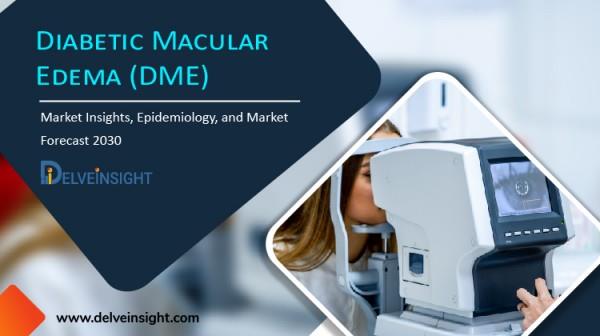
Diabetic Macular Edema (DME) Market Size and Share, Market Research Report 2030
(MENAFN- GetNews) DelveInsight's "Diabetic Macular Edema (DME) - Market Insights, Epidemiology, and Market Forecast-2030" report delivers an in-depth understanding of the Diabetic Macular Edema (DME), historical and forecasted epidemiology as well as the Diabetic Macular Edema (DME) market trends in the United States, EU5 (Germany, Spain, Italy, France, and United Kingdom) and Japan.
Diabetic Macular Edema (DME) is an accumulation of fluid in the macula part of the retina which arises as a consequence of failure of the blood-retinal barrier (BRB) due to leaking blood vessels. It is the leading cause of major vision loss in diabetic persons. In order to develop DME, one must first have diabetic retinopathy (DR; damaged the blood vessels in the retina) that happen to people with diabetes. When DR is left untreated, these blood vessels begin to build up pressure in the eye and leak fluid, causing DME.
DelveInsight's " Diabetic Macular Edema (DME) Market Insights, Epidemiology, and Market Forecast 2030 " report delivers an in-depth understanding of the Diabetic Macular Edema (DME), historical and forecasted epidemiology as well as the Diabetic Macular Edema (DME) market trends in the United States, EU5 (Germany, Spain, Italy, France, and United Kingdom) and Japan.
Request for a detailed sample copy of the report:
Diabetic Macular Edema (DME) Disease Overview
There are two forms of DME:
- Focal DME
- Diffuse DME
Some common risk factors include those who have had diabetes for an extended amount of time, severe hypertension (high blood pressure), fluid retention, hypoalbuminemia (low levels of protein in body fluids), hyperlipidemia (high levels of fats in the blood).
Common symptoms of DME are:
- Blurry vision
- Floaters
- Double vision
- Blindness (if it goes untreated)
Focal DME occurs because of abnormalities in the blood vessels in the eye while diffuse DME occurs because of widening/swelling retinal capillaries (very thin blood vessels).
The DelveInsight Diabetic Macular Edema (DME) market report gives a thorough understanding of the Diabetic Macular Edema (DME) by including details such as disease definition, symptoms, causes, pathophysiology, diagnosis and treatment.
Diabetic Macular Edema (DME) Treatment
The treatment for DME involves rigorous glycemic control, macular laser treatment, intravitreal pharmacotherapy, especially with anti-VEGF, and surgical treatment. The treatments for focal and diffuse DME differ, but they both involve laser procedures. Most doctors use focal laser treatment to treat focal DME and grid laser treatment to treat diffuse DME. The goal of both kinds of procedures is to stop the leakage in the macula.
Request for a detailed sample copy of the report:
Diabetic Macular Edema (DME) Epidemiology Insights
Diabetic macular edema is a leading cause of vision loss among working-age adults in the U.S. Roughly 8% of the U.S. population is diabetic, and about 28% of those diabetics have eye trouble because of it.
"Approximately 21 million people are suffering from Diabetic Macular Edema worldwide."
Diabetic Macular Edema (DME) Market Outlook
VEGF is a potent vasopermeability factor that has been targeted extensively in DME. The VEGF levels are significantly elevated in vitreous of DME patients when compared with nondiabetic eyes. Thus, the current therapies for DME involves the use of anti-VEGFs. Anti-VEGF treatment requires repeated intravitreous injections to maintain the therapeutic effect.
Other than these, steroid injections suppress pro-inflammatory chemokines, and inhibit leukostasis and phosphorylation of cell-junction proteins. Sustained release corticosteroids were developed in effort to decrease the number of injections a patient with DME requires.
According to DelveInsight, Diabetic Macular Edema market in 7MM is expected to change in the study period 2017-2030.
"As per a study, the costs for patients with DME were $28,606 compared with $16,363 for patients with diabetes mellitus (DM) but not DME."
Media Contact
Company Name: DelveInsight Business Research LLP
Contact Person: Kritika Rehani
Email: Send Email
Phone: 9193216187
Address: 304 S. Jones Blvd #2432
City: Las Vegas
State: Nevada
Country: United States
Website:

Legal Disclaimer:
MENAFN provides the
information “as is” without warranty of any kind. We do not accept
any responsibility or liability for the accuracy, content, images,
videos, licenses, completeness, legality, or reliability of the information
contained in this article. If you have any complaints or copyright
issues related to this article, kindly contact the provider above.



















Comments
No comment